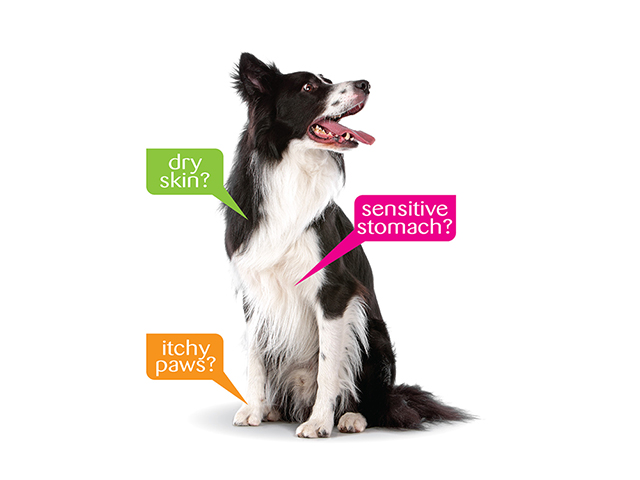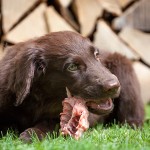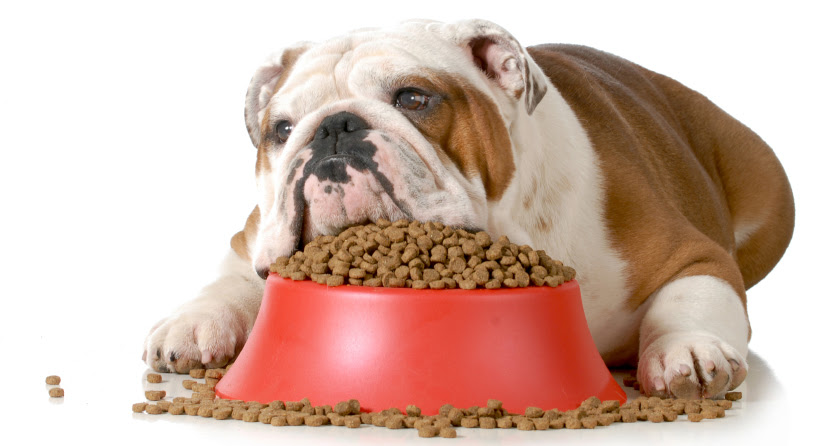There is actually just one way to find out. Here is an example of a dog owner’s experience. Her Six-year-old, long-coated akita Nyoko had severe non-responsive inflammatory bowel disease, lost half of her body weight and her hair. She suffered from bloody diarrhea and demonstrated noise phobias of thunderstorms, fireworks and motorcycles. She also tested as having hypothyroidism. Her veterinarian was recommending euthanasia. . .
Desperate, her pet parent learned about NutriScan, a saliva-based food sensitivity and intolerance test developed by veterinary diagnostician and thyroid expert Dr Jean Dodds DVM. The test was performed on Nyoko and it turned out she was reactive to chicken, corn, cow’s milk, soy, turkey, venison, wheat, white fish and millet. Once those foods were removed from her diet and her hypothyroidism was treated, Nyoko came back up to her healthy weight of 85 pounds and got back to her normal energy levels.
While Nyoko’s story may sound like an extreme case, it’s far from atypical. According to NutriScan.org, while true food allergies (typically immediate and violent reactions) are rare, food sensitivities and intolerances are much more common and can result in a reaction over a longer period of time. And reactions can run the gamut of symptoms, from gastrointestinal problems like chronic diarrhea to skin issues like itching, skin lesions and hair loss.
Take, for instance, 2-year-old Australian shepherd Socrates, who suffered from engorged, pink skin and chronic diarrhea since he was a puppy. After he tested reactive to beef, chicken, corn, cow’s milk and wheat, the foods were removed. He got healthy and he’s now a therapy dog for autistic children.
And then there’s Jagger, a 1 1/2-year-old Gordon setter who had skin eruptions ranging from benign to infected lesions. His food contained salmon or salmon oil, and fish oil supplements. After a biopsy showing an allergy, he was put on a fish and potato diet and an antihistamine. His condition worsened within the week. At this point, NutriScan testing was performed and ended up showing reactions to corn, pork, venison, white fish, millet, peanut, rabbit and salmon (a strong reaction). His skin totally cleared up within days of taking him off the fish and fish oils.
How Does NutriScan Work?
The test measures the levels of IgA and IgM antibodies in the saliva, according to the NutriScan website. These antibodies are produced by the body in order to fight food sensitivities, so they offer the perfect measure of a reaction taking place. In fact, a food intolerance can lead to one of these antibodies showing up in the saliva as early as five months before bowel disease shows clinical symptoms. And, sometimes these antibodies can show up in the saliva without even appearing in the blood.
As opposed to food elimination diets that can take weeks and even months to attempt to figure out the offending food or foods, NutriScan requires only that a small piece of cotton rope (provided in a kit) be inserted in your dog’s mouth for a couple of minutes. Your dog shouldn’t eat anything for three hours before testing. After the kit is submitted by you or your vet’s office, you’ll have the results back in a couple of weeks. Nutriscan currently tests for 24 common food antigens.
Source
Jessica Peralta has been a journalist for 15 years and an animal lover all her life. She has had dogs, cats, birds, turtles, fish, frogs, and rabbits. Her current children are a German shepherd named Guinness and a black domestic cat called Derby. It’s because of them that she decided to become a pet nutritionist and focus her journalistic career on the world of holistic animal care. She loves spending time with them and also learning about all the ways she can make them healthier, the natural way.











